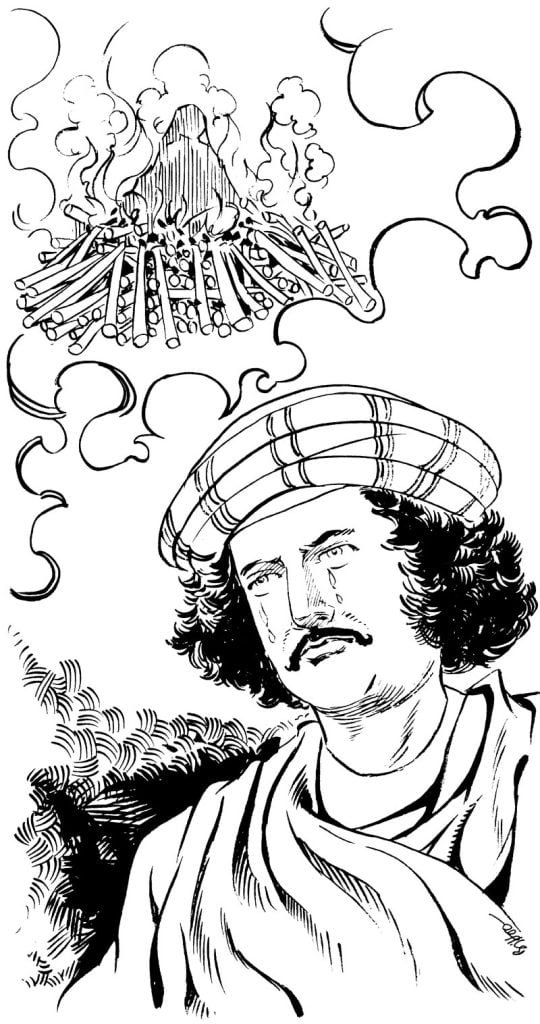Rammohan had never forgotten his mission. He remembered how his sister-in-law was burnt along with the dead body of his brother. His eyes got wet when he remembered this episode.
In 1815 he established the spiritual sabha. This was established in Calcutta. Debates on Sati Pratha took place often in this sabha.
The most daring aspect of Sati Pratha was that the widows who didn’t want to get burnt along with the dead bodies of their husbands, were forced to do so. They were tied with the dead bodies. When they shouted loudly, their shouts were suppressed by the loud beats of the drums.
Some widows beaten very harshly when they raised their voice. They were made unconscious by giving some intoxicating drink and then burnt with the dead bodies of their husbands. This was done so that those widows would not claim their part in husband’s property.

Rammohan opened up his struggle against such evils. He wanted widows to get their rights by eliminating the Sati Pratha. In spiritual sabha, he prepared such a platform, upon which everybody raised their voices against the social evils. The debates going on there proved to be disastrous for the superstitious people who were facing difficulty in saving their existence in the society.
Progressive people gave their full support to Rammohan. Firstly, very few people were in support of making India modern, but, slowly their number began to increase. Many people began to support Rammohan. Among those who supported him were the religious politicians, who were somewhat in support of Rammohan’s thoughts.
Rammohan made his best efforts to raise their suppressing voices. Some people who opposed Rammohan’s condemning their religion, also understood that he was not against their religion but against the superstitions prevailing in their religion. Everyday Vedas were being read in his sabha. The main aim of the sabha was to give good speeches to the people. Rammohan did not go hand-in-hand with one particular community. He adopted all the good thing of all the religions. That was why people from various religions became the members of this sabha.
When there commenced any kind of debate, then many people from various communities took part in those debates. Anyone was free to express his thoughts in his sabha. Common people were also welcomed.
Some people hesitated in participating in that sabha due to social constraints. They had keen desire to take part but had to step backward. Seeing this Rammohan started a method through which any person would ask his question in writing relating to social and religious topics. Rammohan himself answered their queries. In this way Rammohan had to face the debates in public, but he continued to express his modern views in public.
Firstly, Utsavanand and Vidhya Vaagish sent their questions in writing to Rammohan in which they had put up some serious questions. Rammohan answered their queries in a straight forward style. After this, letter writing got a kick start. This went on for many days. Utsavanand’s questions and Rammohan’s answers were compiled in the form of four books. The author who first wrote his biography made it clear that Utsavanand was highly impressed by the straight forward answers of Rammohan.
Those who heard Rammohan’s speeches, praised him a lot. Utsavanand also praised him. Many representatives of Hindu religion highly praised his talent. People used to get inspired by Rammohan.

